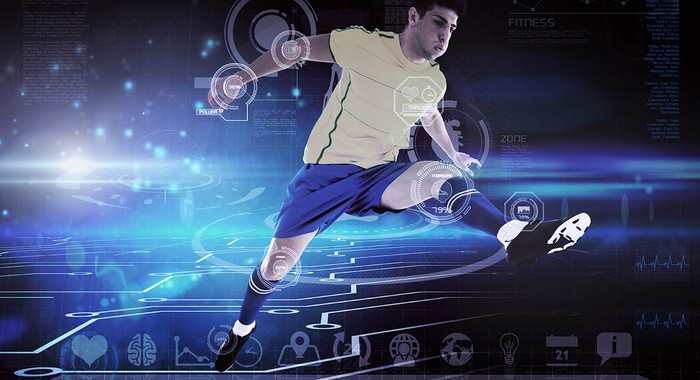Making sports game data effectively usable
He has to score that! That was a hundred percent chance!" With this statement, the passionate football fan often comments on a shot on goal, when a chance that is commonly referred to as a "hundred percent chance" is not converted. However, the true likelihood of scoring is revealed by the Expected Goal model, also known as xGoal, which is now being used in sports reporting.
This is just one example of how widespread sports data has become. Questions regarding spatial control and pressing are also often answered using game analysis data: Which player controls the largest area in the opponent's box? Or: How can one best counter the opponent's build-up play with targeted offensive pressing? Sports scientists have been searching for algorithms for years to better understand these processes. However, only a few experts manage to fully tap into this potential, as it seems that detailed technical expertise is necessary. A computer science project at the Institute of Exercise Training and Sport Informatics (ITS) at the German Sport University Cologne aims to provide a solution to this.
In a previous research project, Institute Director Univ.-Prof. Dr. Daniel Memmert and his team have already developed a new platform for sports data analysis with the support of the Federal Ministry of Education and Research (BMBF): "floodlight" is the name of the software project, which was designed as a freely accessible package to simplify and standardize data processing procedures. The German Research Foundation (DFG) is now funding the project (ME 2678/43 1) with 254,000 euros so that "floodlight" can be further developed. "The central goal is to develop, build and permanently provide e-research technologies for the analysis of spatiotemporal movement data," explains Prof. Dr. Daniel Memmert. The prototype is to be developed into a discipline-specific toolbox for data analysis, equipped with external interfaces to raw data and public data sets. It will enable various processing methods as well as the sharing of data and replication of experiments. There will also be visualization methods such as graphics and interactive user interfaces. "As part of the project funding, we are also focusing on training future scientists in the use of e-research technologies and want to actively promote the development of an open science culture within the discipline," explains Memmert.
The project should set new gold standards and become an important international platform for sharing data and program codes. Based on "floodlight", the project team expects helpful technologies to be available to the scientific community right from the start of the project. "Spatiotemporal movement data, which is used extensively in team sports today, offers the potential to take theoretical models and analyses in sports science disciplines such as physiology, biomechanics, movement science and computer science to a new level," project manager Memmert is convinced.
Project contact:
Prof. Dr. Daniel Memmert
Institute for Exercise Training and Sport Informatics
Phone: +49 221 4982-4330
E-mail: memmert@dshs-koeln.de
